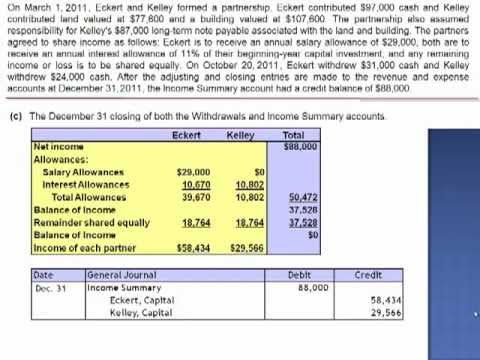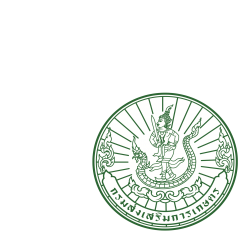Content

See Table 4 for interest expense and carrying value calculations over the life of the bonds using the effective interest method of amortizing the premium. At maturity, the General Journal entry to record the principal repayment is shown in the entry that follows Table 4 . This means Lighting Process, Inc. will repay the principal amount of $10,000 at maturity in ten years and will pay $500 interest ($10,000 × 10% coupon interest rate × 6/ 12) every six months. The price of the bonds is based on the present value of these future cash flows. Given these facts, the purchaser would be willing to pay $10,000, or the face value of the bond, as both the coupon interest rate and the market interest rate were the same. The total cash paid to investors over the life of the bonds is $20,000, $10,000 of principal at maturity and $10,000 ($500 × 20 periods) in interest throughout the life of the bonds.
- With municipal bonds, interest payments are exempt from federal tax.
- The maturity date is the date that the corporation must pay back the full face amount to the bondholders.
- They are categorized as current assets on the balance sheet as the payments expected within a year.
- An adjunct account is a valuation account from which credit balances are added to another account.
- The reason financing fees are an example of a contra liability is that the fees – much like interest on the debt – are amortized over the debt borrowing term.
- Corporate bonds are traded on the bond market similar to the way corporate stock is traded on the stock market.
- —the value that assets or liabilities are recorded at in the company’s financial statements.
Compute the bond interest expense by multiplying the carrying value of the bonds at the beginning of the interest period by the effective-interest rate. This percentage, referred to as the effective-interest rate, is established when the bonds are issued and remains constant in each interest period. The carrying value is the face value of the bonds less unamortized bond discount or plus unamortized bond premium at the redemption date. As the premium is amortized, its balance will decline and as a consequence, the carrying value of the bonds will decrease, until at maturity the carrying value of the bonds equals their face amount. A bond premium, like a bond discount, is allocated to expense in each period in which the bonds are outstanding. To illustrate bonds sold at a discount, assume that on January 1, 2004, Candlestick, Inc., sells $100,000, 5-year, 10% bonds at 98 (98% of face value) with interest payable on January 1.
Contra liability accounts
As a result, the carrying amount decreases and gets closer and closer to face amount over time. The original credit balance in the Premium on Bonds Payable account is reduced by a credit of $754 each year. The carrying amount can be thought of as “what the bond is worth” at a given point in time.
- That did not happen; there was a single 6 percent interest rate agreed-upon by the debtor and the creditor.
- The procedure of keeping liabilities off the balance sheet is often referred to as off-balance sheet financing.
- Under the effective-interest method, the interest expense is calculated by taking the Carrying Value ($104,460) multiplied by the market interest rate (4%).
- Convertible bonds can be converted into common stock at the bondholder’s option.
- GAAP but only if the reported results are not materially different from those derived using the effective rate method.
The debtor must then decide whether to accept this offer. Prepare journal entries for a zero-coupon bond using the effective rate method. Calling bonds – A journal entry is recorded when a corporation redeems bonds early.
Amortizing the Discount
What are the two categories of liabilities reported on the balance sheet? The net amount may also be referred to as the carrying amount or the net realizable amount. By the end of the 5th year, the bond premium will be zero and the company will only owe the Bonds Payable amount of $100,000. By the end of the 5th year, the bond premium will be zero, and the company will only owe the Bonds Payable amount of $100,000. The first difference pertains to the method of interest amortization.
- The seller collects the sales tax from the customer when the sale occurs and remits the tax collected to the state’s department of revenue periodically .
- The face value is the amount of principal due at the maturity date.
- Because some people will be attracted to buy because of lower payments over time and others will be interested due to the lower up- front purchase price.
- Identify the true statements regarding noncontrolling interest.
- An adjunct account may be contrasted to a contra account.
- This means the corporation receives less cash than the face amount of the bond when it issues the bond.
One source of financing available to corporations is long‐term bonds. Bonds represent an obligation to repay a principal amount at a future date and pay interest, usually on a semi‐annual basis. Unlike notes payable, which normally represent an amount owed to one lender, a large number of bonds are normally issued at the same time to different lenders.
Bonds sold at Par – Journal Entries
If the contractual interest rate is less than the market rate, bonds sell at a discountor at a price less than 100% of face value. For the issuer, the bonds sell at a higher price and pay a lower rate of interest than comparable debt securities that do not have a conversion option. Obligations in the form of written notes are recorded as notes payable. In reality, the parties established an annual rate of 6 percent for the entire two-year period.
Where is discount on bonds payable reported?
The discount on bonds payable should be recorded in the balance sheet by directly subtracting it from the bond's face value. However, the premium on bonds payable should be recorded by adding it to the maturity amount of the bond. Both are considered liability valuation accounts.
Since we originally credited Bond Premium when the bonds were issued, we need to debit the account each time the interest is paid to bondholders because the carrying value of the bond has changed. Note that the company received more for the bonds than face value, but it is only paying interest on $100,000. As the discount is amortized, the discount on bonds payable account’s balance decreases and the carrying value of the bond increases. The amount of discount amortized for the last payment is equal to the balance in the discount on bonds payable account. As with the straight‐line method of amortization, at the maturity of the bonds, the discount account’s balance will be zero and the bond’s carrying value will be the same as its principal amount. See Table 2 for interest expense and carrying values over the life of the bond calculated using the effective interest method of amortization .
Redeeming bonds is not a corporation’s primary line of business, so these transactions are non-operational. A corporation often needs to raise money from outside sources for operations, purchases, or expansion. Investors contribute cash to the business and are issued stock in return to recognize their shares of ownership.
According to Statista the amount of mortgage debt—debt incurred to purchase homes—in the United States was $14.9 trillion on 2017. This value does not include the interest cost—the is discount on bonds payable a contra account cost of borrowing—related to the debt. The $10,000 of depreciation will reduce the book value of the car. Accumulated depletion is the counterpart of natural resource assets.
